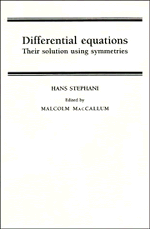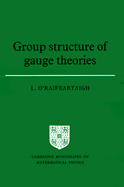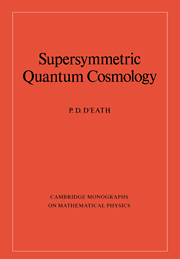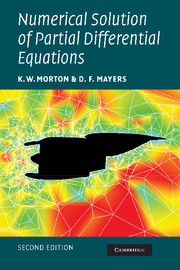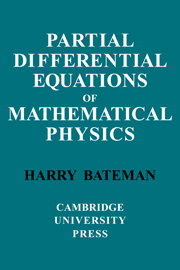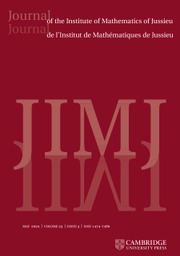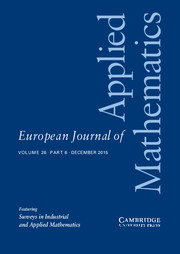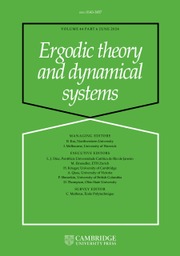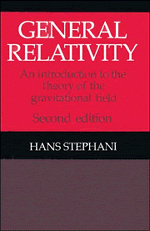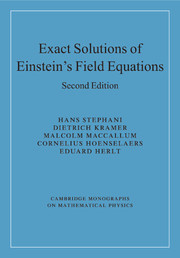Differential Equations
This book provides an introduction to the theory and application of the solution of differential equations using symmetries, a technique of great value in mathematics and the physical sciences. In many branches of physics, mathematics, and engineering, solving a problem means a set of ordinary or partial differential equations. Nearly all methods of constructing closed form solutions rely on symmetries. The theory and application of such methods have therefore attracted increasing attention in the last two decades. In this text the emphasis is on how to find and use the symmetries in different cases. Many examples are discussed, and the book includes more than 100 exercises. This book will form an introduction accessible to beginning graduate students in physics, applied mathematics, and engineering. Advanced graduate students and researchers in these disciplines will find the book an invaluable reference.
Reviews & endorsements
"...as an account of classical general relativity, this well produced and excellently translated book has many virtues." Physics Bulletin
"A nice introduction to the theory and practice of finding and using symmetries to solve differential equations." American Mathematical Monthly
"...Stephani's book does a good job of motivating the study of Lie group methods for differential equations from an elementary standpoint." SIAM Reviews
"The author, who has an easy-to-read practical style, consistently keeps the emphasis on applications. Thus, most physicists will be able to get useful information about ordinary differential equations (ODE's) and partial differential equations (PDE's), without being bogged down in cumbersome mathematical formalism....well worth reading if one is at all interested in sophisticated and powerful symmetry techniques for handling differential equations and if one wishes to have the most straightforward approach to the topic." D. E. Vincent, Physics in Canada
"...Stephani...has built a book that tries to guide its readers toward a sure knowledge of this very important tool for finding solutions of (nonlinear) differential equations. In the early sections, the derivations presented are the most clear and detailed ones that this writer has ever seen....Students new to this area will find reading or studying the current book an altogether enjoyable occupation, without any of the intimidation that sometimes is caused by similar books." J.D. Finley, Foundations of Physics
Product details
January 1990Paperback
9780521366892
276 pages
229 × 152 × 16 mm
0.41kg
Available
Table of Contents
- Preface
- 1. Introduction
- Part I. Ordinary Differential Equations:
- 2. Point transformations and their generators
- 3. Lie point symmetries of ordinary differential equations: the basic definitions and properties
- 4. How to find the Lie point symmetries of an ordinary differential equation
- 5. How to use Lie point symmetries: differential equations with one symmetry
- 6. Some basic properties of Lie algebras
- 7. How to use Lie point symmetries: second order differential equations admitting a G2
- 8. Second order differential equations admitting a G3IX
- 9. Higher order differential equations admitting more than one Lie point symmetry
- 10 Systems of second order differential equations
- 11. Symmetries more general than Lie point symmetries
- 12. Dynamical symmetries: the basic definitions and properties
- 13. How to find and use dynamical symmetries for systems possessing a Lagrangian
- 14. Systems of first order differential equations with a fundamental system of solutions
- Part II. Partial Differential Equations:
- 15. Lie point transformations and symmetries
- 16. How to determine the point symmetries of partial differential equations
- 17. How to use Lie point symmetries of partial differential equations I: generating solutions by symmetry
- 18. How to use Lie point symmetries of partial differential equations II: similarity variables and reduction of the number of variables
- 19. How to use Lie point symmetries of partial differential equations III: multiple reduction of variables and differential invariants
- 20. Symmetries and the separability of partial differential classification
- 21. Contact transformations and contact symmetries of partial differential equations, and how to use them
- 22. Differential equations and symmetries in the language of forms
- 23. Lie-Backlund transformations
- 24. Lie-Backlund symmetries and how to find them
- 25. How to use Lie-Backlund symmetries
- Appendices
- Index.

